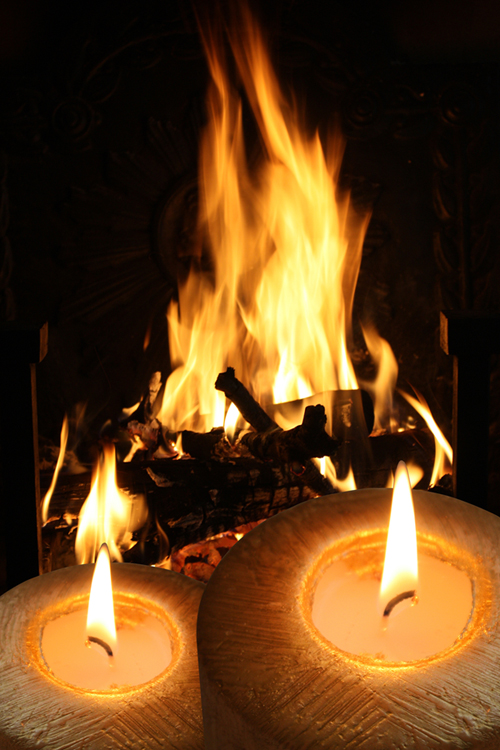We can’t prevent bad food or family squabbles over the holidays, but we can help you prevent the greater tragedies of injuries and house fires due to faulty or misplaced electrical wiring and connections.
Here are a few holiday fire facts from the National Fire Prevention Association’ applied research:
- U.S. fire departments responded to an estimated average of 790 home structure fires per year that began with decorations, excluding Christmas trees. These fires caused an annual average of one civilian fire death, 26 civilian fire injuries and $13 million in direct property damage.
- Electrical distribution or lighting equipment were involved in more than two in five home Christmas tree fires.
- Nearly one in five Christmas tree fires were started by lamps or bulbs. Six percent were started by candles.
- Roughly two of every five home Christmas tree fires started in the living room.
- Candle fires peak in December and January with 11 percent of candle fires in each of these months.
- Thanksgiving is the peak day for home cooking fires, followed by Christmas Day and Christmas Eve.
- Year round, more than one-third (35 percent) of home decoration fires were started by candles. This jumped to almost half in December when candles started 45 percent of such fires. Cooking started one-fifth (19%) of decoration fires.
Carefully decorating your home can help make your holidays safer. Here are a few tips on how to keep your home both welcoming and safe throughout the holiday season.
- Don’t overload circuits
Typical household branch circuits are 15 amps, and this is plenty of capacity for normal household use. But adding large numbers of holiday lights, countertop kitchen appliances, and supplemental heating can put more load on a circuit than it’s designed for. This can lead to annoying trips to the breaker box but it’s also a warning sign that trouble is lurking. If you keep tripping breakers, if outlets or cords feel warm, or if you notice any off smells around outlets, electrical devices, or cords, disconnect them to avoid creating a fire hazard.
- Don’t exceed extension cord capacity
Extension cords are rated to carry a specific load, which is indicated on the packaging. When that’s exceeded, the cords can trip breakers or become overheated, melting insulation and causing short circuits and fires. Feel your cords after are on for a while. If they feel warm to the touch, replace them with higher capacity cords. Better yet, arrange your holiday lights and appliances so you don’t need extension cords at all.
- Don’t run cords under carpet or rugs
Modern building codes require wall outlets to be spaced at least every 12 feet but older homes may not conform to this, necessitating the use of extensions. Use them if you must but realize that even a properly sized extension cord can get warm under load. When they’re run under rugs or carpet, this heat can’t dissipate and can lead to the same safety issues as an undersized cord.
- Protect electrical cords from pets and small children
Dogs and cats (and toddlers) love to chew on things, and an exposed cord can be a real temptation. Aside from the risk of electrocution, gnawed-away insulation presents the danger of short circuits and fires. And loose or tangled cords can be a strangulation hazard, too.
Pets may roam the house at all hours, so check your cords frequently for damage.
- Avoid tripping hazards
Run any cords safely away from traffic areas to prevent trip hazards (but not under rugs or carpet). If you must run a cord across a threshold or other open area, use a cord protector, available at hardware and home improvement centers, and be sure it’s secured properly in place.
- Don’t let your tree or wreaths dry out
With all the holiday chores, it’s easy to overlook keeping your greenery moist. Check the water levels in tree stands and containers and discard any vegetation that starts to drop needles, turn brown or feels brittle to the touch before it becomes a fire hazard.
- Use candles safely
Decorative candles add a warm glow to cold holiday nights. But neglecting them can result in disaster. Keep them safely away from combustible items like drapes and decorations, keep them seated securely in holders and away from high traffic areas, pets, and children to prevent accidents. And never leave them unattended; fires can start and spread quickly.
- Turn off lights at bedtime
Since most holiday fires start in the living room, turning off the lights while you sleep is the safest. If you want to leave your tree lights on overnight, be sure to follow the precautions above. And be sure your smoke detectors are working properly.
- Switch to LED Lights
LED lights come in nearly all sizes, colors, and shapes for holiday lighting —including the retro-look of large incandescent bulbs. They last longer, burn cooler, and draw much less current than incandescent bulbs. Because they draw less current, LED bulbs let you put more lights on a circuit without risking an overload. We highly recommend them for all your lighting needs year-round.
The pros at Allstar Electrical Services want to extend our best wishes to you and your loved ones for a safe and joyful holiday season and a better year to come. We look forward to serving your electrical needs through the remainder of this year and many more to come.
Give us a call or visit our web site, allstarelectrical.com, for any of your holiday electrical needs and for help on your projects in the coming year.


